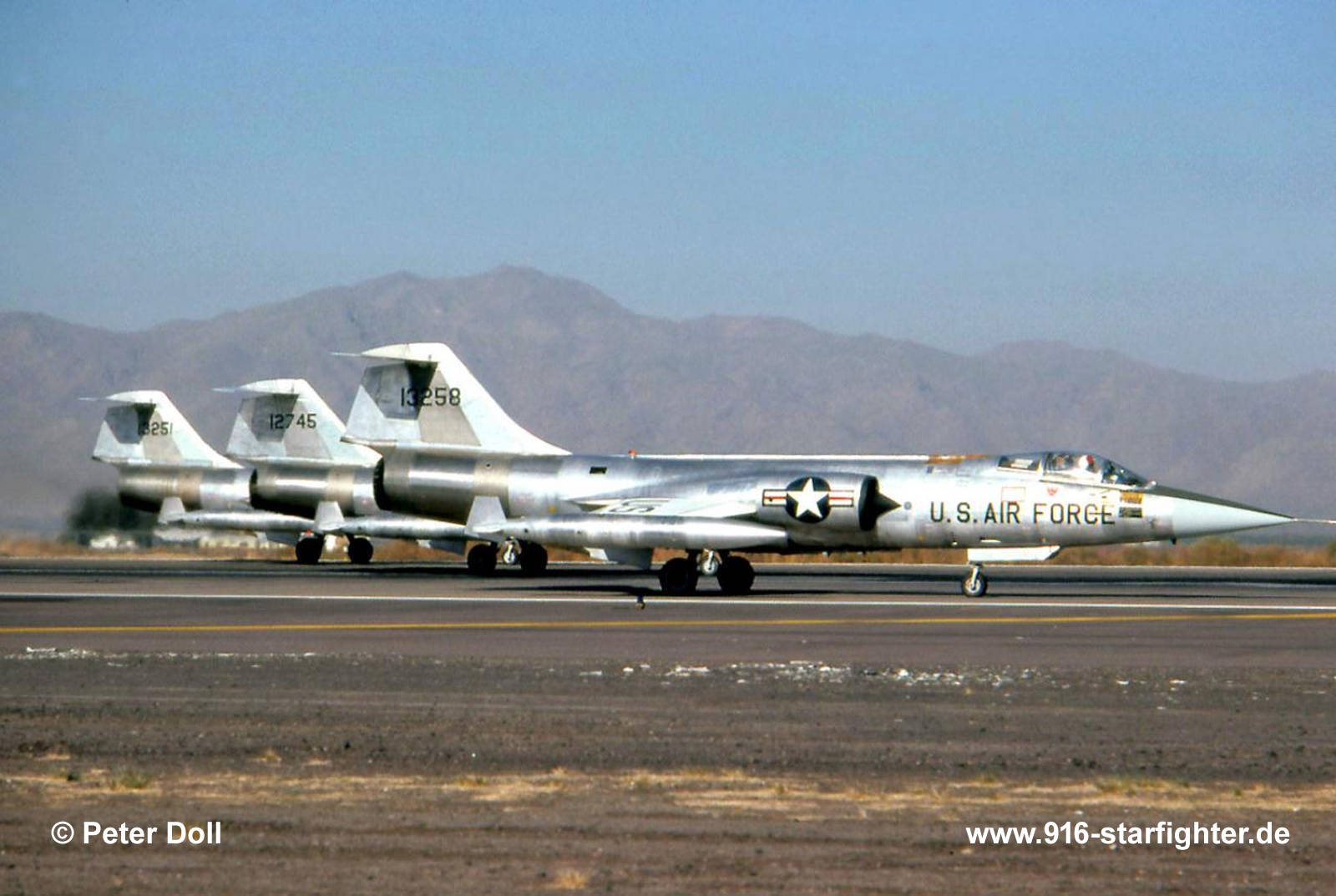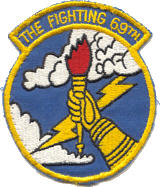
F-104G "13258" (63-13258) on 3-ship line-up at Luke AFB F-104G, construction number 683-2042, company model 683-10-19, US serial number 63-13258, built by Lockheed manufactured by Group USA (ARGE-USA); assembly in Fighterbomber version according contract lot 4; flight test release October 27, 1961 flown with register number "142" for test flights; coded KF+118 accepted by BABwLockheed for delivery with 13:35 flight hours shipped in boxes to Bremerhaven, Germany on January 31, 1962; railroad transport to Messerschmitt-Manching for reassembly and test flight on April 25, 1962 project "42" as Fighterbomber (for JaboG 31) with Vulcan M61 20 mm machine gun installed and long range tanks as loose parts DA+246 JaboG 31 "Boelcke" at Norvenich AB delivery date on May 9, 1962 in Silver-finish colors ErpSt 61 Detachment at Istres, France coded YA+246 on February 28, 1963; planned for project "Columbus" on November 15, 1962 to Messerschmitt on July 4, 1963 for disassembly; according project "Columbus" coded BG+147 airlifted on August 12, 1963 to Lockheed-Burbank reassembled and modified to the latest modification level at Lockheed-Palmdaleoperated at Luke AFB by the 4510th CCTW in USAF Silver-finish color scheme coded 13258 (German shadow serial number 2035, never used for registration) crashed on January 30, 1976 during a practice 4 ship formation flight after uncontrolled control stick inputs (APC) resulting in a nose down uncontrollable flight situation; pilot ejected safely at approximately 1.500 feet and at a speed in the region of 500+ knots operated that day by 418th TFTS, 58 TFTW; struck off charge order (AVA) January 30, 1976; 2.531 flight hours. crash site: between Ash Fork and Seligman, about 45 NM NNW of Prescott, Arizona. Project "42": 42 aircraft (hence the name of the project!) for JaboG 31 (FBW 31) at Norvenich in Fighterbomber version with built-in Vulcan M61 20 mm machine gun, long-range tanks as loose parts. pilot report: "Flying along in a four-ship formation as number 4 in a left hand climbing turn all of a sudden the stick-shaker starting firing forcing the aircraft nose down 5° with every stick-shaker firing. At the same time I had a frozen stick and was thus not capable to move it anymore. By the time I decided to bail out (the only thing left to see from the cockpit was red dirt!) the nose was 30° down, the altitude approximately 1'500 feet and the speed in the region of 500+ knots. copyright © Peter Doll collection

